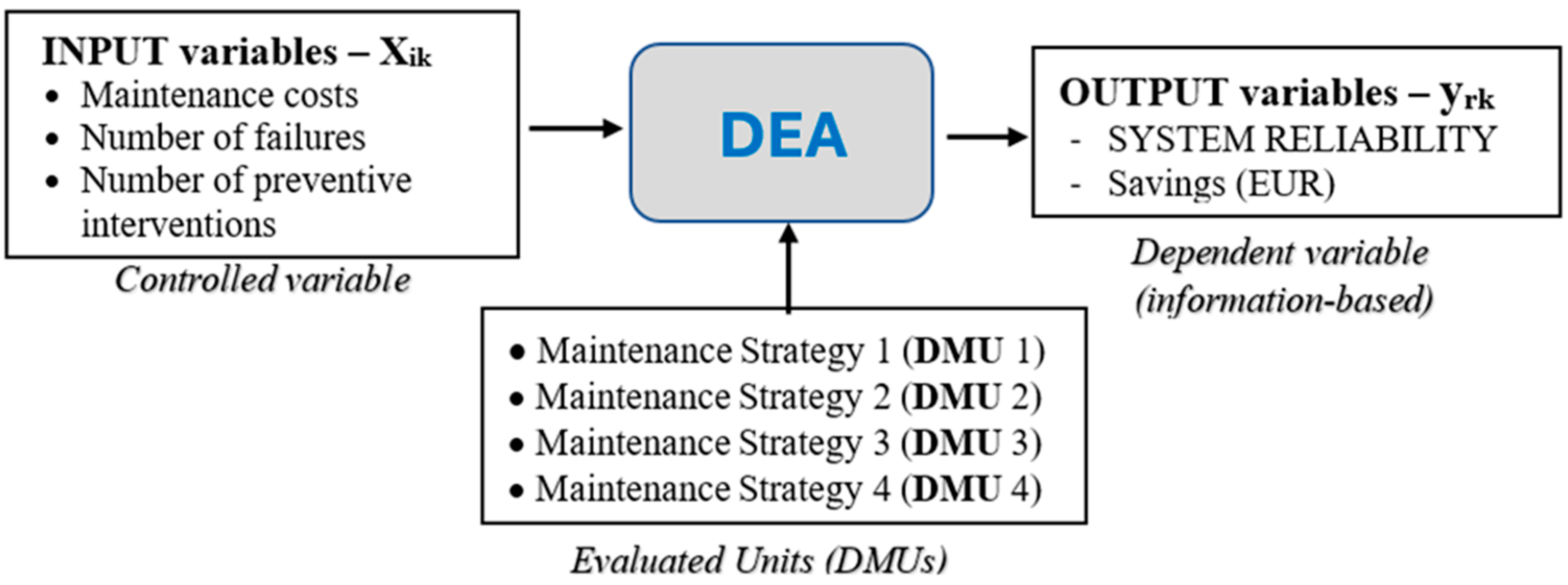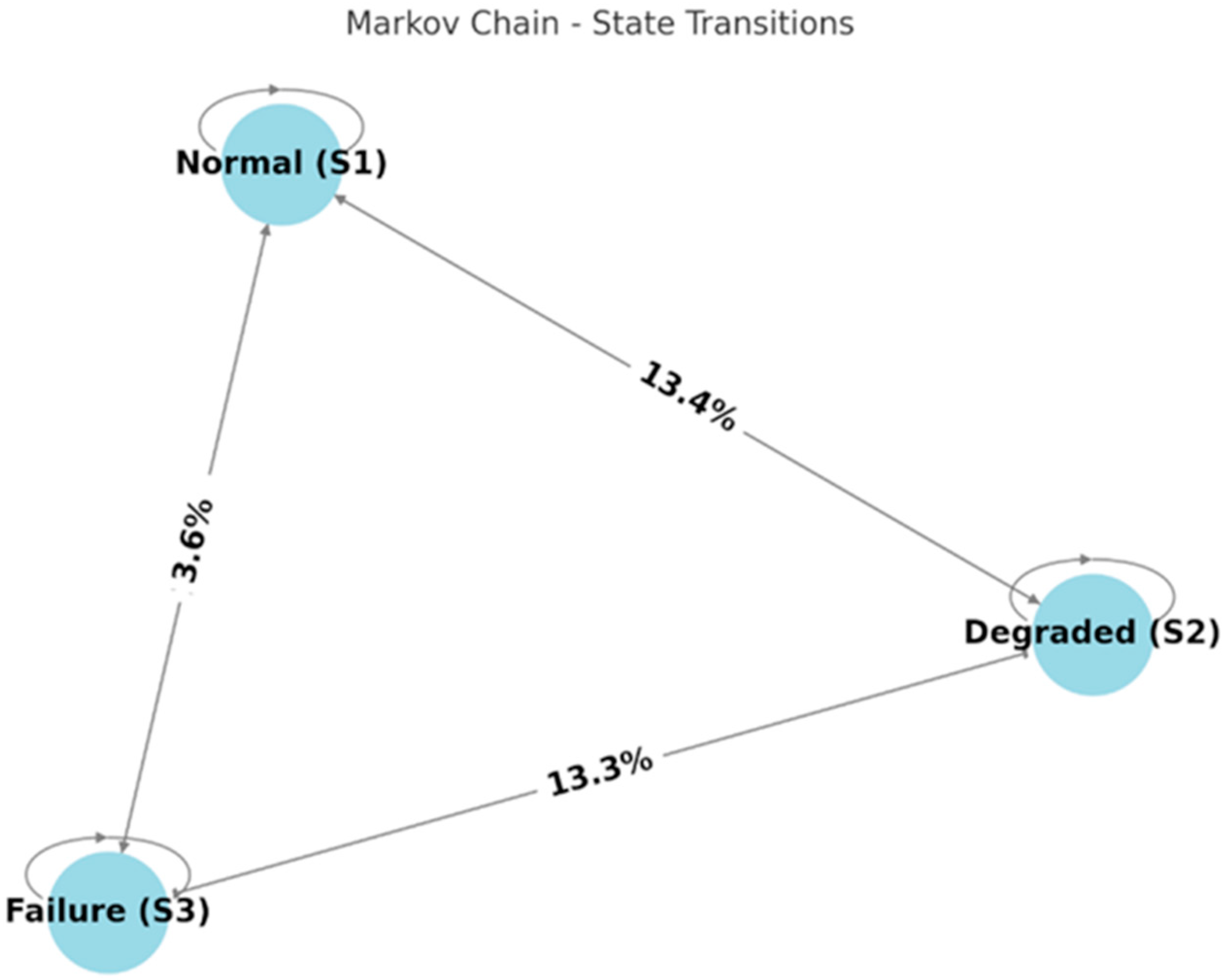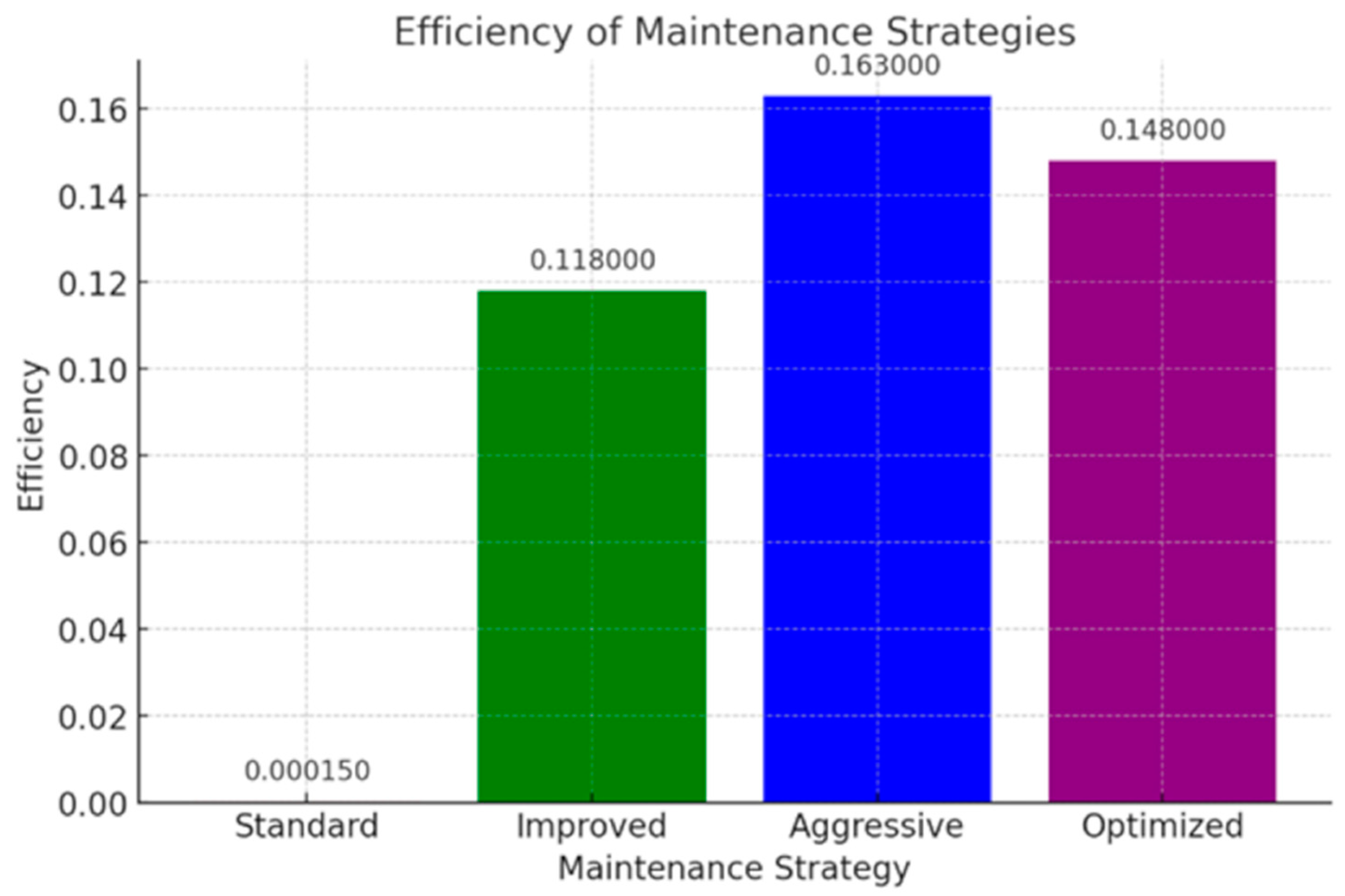1.1. Background of the Problem
Ensuring the reliability and efficiency of ship engines is a critical challenge in maritime transport. Container ships, as key players in global trade, rely on the uninterrupted operation of their main engines to maintain supply chain continuity. However, unplanned failures of critical engine components cause substantial financial losses, extended downtime, and disruptions in global logistics networks [
1]. Recent analyses highlight a direct correlation between fleet reliability and the economic performance of global trade [
2].
An analysis of operational data reveals a concerning trend: 64.3% of ship engine components experience failures (S3 state), indicating systemic deficiencies in current maintenance strategies. Traditional preventive maintenance, based on fixed intervals, fails to account for actual operating conditions, leading to increased costs and prolonged downtimes. According to reference [
3], the average downtime per failure can reach up to 14 days, posing a significant challenge in maintaining schedules within global supply chains. Such data serve as a benchmark within models based on reliability analysis and enable the simulation of the effectiveness of various maintenance strategies. Furthermore, fuel quality—particularly variations in sulphur content—significantly impacts the wear of components such as high-pressure pumps. While moderate amounts of sulphur contribute to lubrication, excess or deficiency can cause abrasive and chemical wear. In this paper, this parameter is used as part of scenarios within the analytical model, and precise quantification of the relationship requires additional empirical research and monitoring using integrated fuel monitoring systems.
Studies indicate that 72% of pump failures occur before reaching their recommended service interval, underscoring the need for more advanced maintenance planning approaches [
4].
These challenges demonstrate the need for the development of predictive maintenance models that enable early detection of component degradation and optimized scheduling of interventions [
5]. The integration of Weibull reliability analysis, Markov chains, and DEA models offers a promising approach to improving ship engine maintenance strategies, minimizing operational risks, and enhancing overall fleet efficiency.
1.2. Review of Existing Approaches to Marine Engine Maintenance
The maintenance of ship engines has evolved from traditional reactive approaches to advanced predictive strategies driven by data analytics. Reactive maintenance, which is performed only after a component failure, has long dominated the maritime industry due to its simplicity, but it results in significant financial losses and disruptions in global logistics networks [
1]. A shift towards preventive maintenance, based on fixed time intervals, represented an improvement but failed to consider actual operating conditions, often leading to inefficient intervention timing.
Recent studies emphasize the importance of Reliability-Centred Maintenance (RCM), which optimizes resource allocation and reduces unexpected failures [
6]. This approach integrates advanced analytical methods to assess reliability and predict failures. The Weibull distribution has been identified as one of the most precise methods for modelling ship engine failures, enabling accurate estimation of component lifespan and improved scheduling of maintenance activities [
7].
Recent analyses highlight the use of Markov models for maintenance optimization, particularly in challenging offshore contexts [
8]. A review demonstrates that approaches such as Hidden Markov Models (HMMs) and Partially Observable Markov Decision Processes (POMDPs) can effectively capture multiple engine states—normal, degraded, and failed—thus supporting diagnostics, prognostics, and efficient scheduling. Although harsh offshore conditions complicate maintenance, Markov-based methods show promise in enhancing reliability.
Dynamic reliability analysis is becoming increasingly important in modern maintenance frameworks. One study [
9] developed a tool for dynamic reliability analysis of ship systems using differential equations to mathematically model system conditions and predict maintenance needs. Another technique applies a semi-Markov decision algorithm to a deteriorating system with buffer capacity—where repair times follow continuous distributions—and operates on a class of control-limit policies, converging to an optimal maintenance strategy [
10].
The latest trends involve the implementation of AI and IoT technologies for real-time monitoring of ship systems [
11,
12]. In recent research, a framework was developed for reliability assessment in container shipping, highlighting the role of continuous data collection and analysis in optimizing maintenance schedules [
13]. The integration of real-time condition monitoring with predictive analytics enables a shift from traditional scheduled maintenance to data-driven, condition-based strategies, improving both operational efficiency and cost-effectiveness.
1.3. Research Objectives and Hypotheses
This study has three primary objectives. The first objective is to identify critical failure points using Weibull analysis, which enables modelling the failure intensity of key marine engine components. By estimating the shape parameter (β) and characteristic life (α), the MTTF is determined, identifying the components most susceptible to failure. Special attention is given to high-pressure fuel pumps and turbochargers, as 72% of failures occur before the recommended service intervals.
The second objective focuses on optimizing maintenance scheduling through Markov chains for dynamic intervention planning. Analysing transition probabilities between operational states (S1—normal, S2—degraded, S3—failure) allows the development of a strategy that reduces transitions from degraded (S2) to failure (S3), particularly for components with a transition probability exceeding 50%.
The third objective is the evaluation of maintenance strategies using the DEA model, which provides a quantitative comparison of four strategies: standard, improved preventive, aggressive preventive, and optimized preventive maintenance. The goal is to identify the most cost-effective approach based on the cost–reliability ratio.
Based on these objectives, the main hypothesis is formulated: integrating Markov chains and the DEA model into maintenance strategies enables optimization by reducing unplanned failures, increasing operational efficiency, and rationalizing costs.
This hypothesis is built on three key assumptions. First, Markov chains facilitate early detection of component degradation (S2 state), reducing the risk of transition to failure (S3). Second, the DEA model identifies inefficient strategies and optimizes resource allocation based on the criticality of individual components. Third, Weibull analysis provides precise lifetime estimations, which are essential for planning preventive interventions.
The expected outcomes of the research include a reduction in the proportion of components in the S3 state from 64.3% to 40%, an increase in MTTF for high-pressure pumps from 18,500 to 22,000 h, and the implementation of sensor systems for continuous condition monitoring.
When interpreting the results, certain research limitations must be considered. The analysis was conducted exclusively on VLCS/ULCS container ships during the 2022–2023 period, which may affect the generalization of findings. Future research should encompass a broader sample of different ship types and an extended timeframe to further validate the effectiveness of the proposed model.
Unlike existing approaches that focus solely on diagnostics or risk analysis, the proposed algorithm integrates three complementary methods—Weibull analysis (for modelling wear), Markov chains (for tracking state over time), and DEA (for quantitative efficiency assessment). This enables multidimensional optimisation that not only improves system availability but also supports decision-making based on objective performance indicators.
The novelty of this research lies in the integration of three complementary methodologies—Weibull reliability analysis, Markov chains, and DEA—into a unified framework for maintenance optimisation. Unlike conventional Reliability-Centred Maintenance (RCM), which relies on static failure analysis, or Condition-Based Maintenance (CBM), which responds to sensor signals without strategic evaluation, the proposed model introduces dynamic monitoring of degradation states and quantitative assessment of strategy effectiveness.
Recent literature highlights the importance of Risk-Based Maintenance (RBM) approaches; however, such models often do not include stochastic state modelling or objective ranking of strategies [
5].
This research enables dynamic adjustment of maintenance intervals (e.g., α = 18,500 h; β = 1.8), a reduction in transitions from the degradation state (S2) to failure (S3) from 52.4% to 30%, and an economic efficiency assessment of strategies using the CCR DEA model (efficiency of the optimised strategy = 0.148). The framework is specifically adapted to large container ship fleets, where variable operating conditions require adaptable maintenance plans.
By combining reliability theory with operational analytics, this study provides a structured foundation for the implementation of predictive maintenance in smart ship systems and within the context of Industry 4.0.










